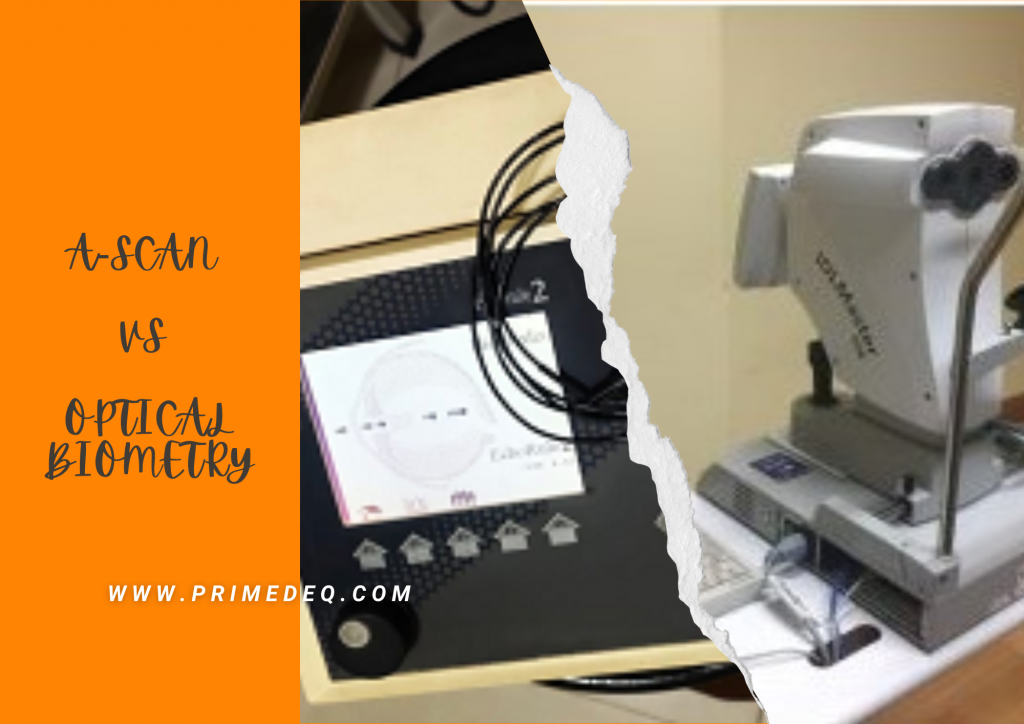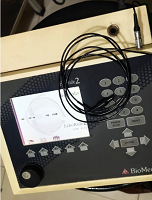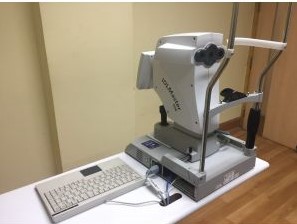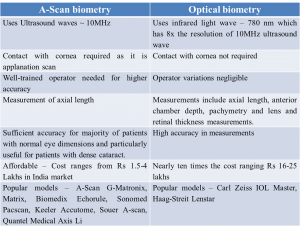
A-Scan machine is one of the most important equipment in ophthalmology surgeries. Precise and accurate biometry is essential for best outcomes in cataract and refractive surgeries. Ocular biometry is essentially measurement of dimensions of various parts of the eye, including corneal curvature, axial length, and anterior chamber depth. These measurements are used to calculate the appropriate power of the intraocular lens (IOL) to be implanted for a patient, during cataract surgery. Conventional A-Scan machine is the gold standard for axial length measurement of eye to determine the IOL power required for a patient of cataract surgery.
A-Scan biometry
Applanation ultrasound biometry also referred to as A-scan, is biometry by applanation. It requires that the ultrasound probe be placed directly on the corneal surface, flattening it, either using a slit lamp or by holding the ultrasound probe by hand. A-scan machine is essentially a diagnostic ultrasound device. It can measure the length of the eye and can be useful in diagnosing common eye problems. A-scan machine is mainly used by ophthalmologists to determine the power of the intraocular lens (IOL) needed for the artificial implant, before cataract surgery.
Optical Biometry
Lately however, Optical biometry is used in pursuit of higher degree of accuracy. Partial Coherence Interferometry (PCI) based optical biometry presents an advanced technology for precise ocular measurements, used not only for axial length, but anterior chamber depth, pachymetry (thickness of cornea) and lens and retinal thickness measurements.
Comparison between A-Scan and Optical Biometry
Unlike A-Scan machine that uses ultrasound wave, Optical biometry uses a 780 nm infrared light wave that has 8x the resolution of a 10 MHz sound wave, making the measurement of axial length very precise and avoiding operator variations in measurements. Also increasing the accuracy is the fact that contact with the cornea is not needed, eliminating variations due to compression on the cornea. Optical biometry gives the refractive axial length as against the anatomic axial length obtained with ultrasound biometry. It also incorporates actual thickness of the retina, whereas ultrasound adds a standard 200um to the axial length.
A-Scan – Affordability vs Precision
Ultrasound biometry is popular amongst ophthalmologists. The biggest advantage of ultrasound biometry units is its affordability. It is 1/8th – 1/10th the cost of an optical biometry in India. Technically also, it is preferred for e.g. to measure axial length in the presence of a very dense cataract or corneal edema where optical biometry is not that useful. Ultrasound does not require the patient to fixate on a target – to that extent, patient cooperation is not material. Ultrasound A-scan is more than sufficient for majority of patients with normal eye anatomy. However using A-scan requires well-trained operator to ensure consistency and higher degree of accuracy.

Popular A-Scan machine models are, A-Scan G-Matronix, Matrix, Biomedix Echorule, Sonomed Pacscan, Keeler Accutome, Souer A-scan, Quantel Medical Axis Li
Popular Optical Biometry models – Carl Zeiss IOL Master, Haag-Streit Lenstar
Zeiss IOL Master introduced and established the optical biometry and is considered the gold standard by many.
The advances in technology for ocular biometry have vastly improved precision for IOL power measurements and outcomes for cataract and refractive surgery. There are advantages and disadvantages to both ultrasound and optical biometry and both continue to be popular with ophthalmologists based on specific requirements.
—————————————————————————————————————————
PrimedeQ is an e-Marketplace for buying, selling, renting, servicing and spares of medical equipment. We offer all types of used / refurbished medical equipment , including A-Scan machine, Autorefractor, Phaco machine, other ophthal equipment, endoscopes, OT equipment, Laparoscopic Equipment, Lab equipment, X-Ray, TMT, ECG, anesthesia machine, ultrasound machines etc. We offer microdebrider, laparoscope , endoscope and ultrasound probe and A-Scan repair services etc.
https://in.linkedin.com/in/shanthi-mathur-ab07838


